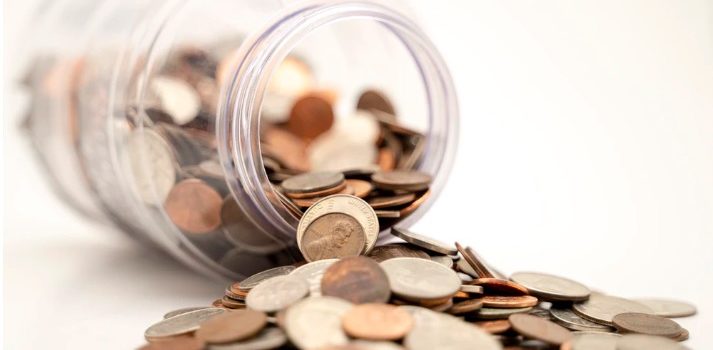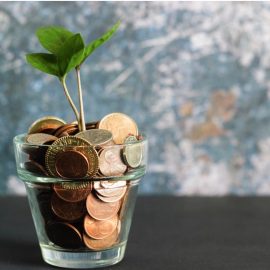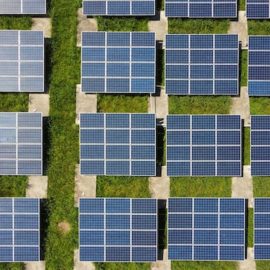

This article is an excerpt from the Shortform book guide to "The Automatic Millionaire" by David Bach. Shortform has the world's best summaries and analyses of books you should be reading.
Like this article? Sign up for a free trial here .
Why is it important to have a financial safety net? How many months’ worth of living expenses should your safety net cover?
No matter how much money you earn, it’s important to have a financial safety net—a savings account with money you can use for emergencies—to prepare for worst-case scenarios. To start building your safety net, figure out how much you need to save to cover your living expenses so that you can decide how much money to set aside each month.
In this article, we’ll explore how to automate contributions toward your safety net to ensure that you’re prepared for worst-case scenarios.
Why You Need a Safety Net
There are two reasons to have a financial safety net. The first is to make sure you have a fund to see you through hard times. Bach states that the average American has less than three months’ worth of expenses saved—these people are financially unprepared for the bad, unexpected things that could happen such as if they have to isolate at home and quit work due to a pandemic.
The second reason to build a safety net is to improve the quality of your life here and now. Bach argues that with extra money in the bank, you give yourself space to breathe and decide how you actually want to spend your time. For example, you’re less likely to put up with a job that doesn’t suit you if you have enough money to support yourself while you look for a more satisfying job.
A recent study confirms Bach’s belief that saving money improves lives. The research revealed that people who save money tend to enjoy more happiness and satisfaction than those who don’t save. This is because saving money increases your peace of mind and decreases your psychological distress—with extra money, you feel more prepared to handle uncomfortable situations.
Bach outlines two steps to create your financial safety net: assess how prepared you are and grow your savings.
1. Assess How Prepared You Are
Bach explains that financially secure people aim to save at least 3 to 24 months’ worth of savings. To figure how long you could survive on your savings without additional income, answer the following questions:
- What are your current monthly expenses? Include your essential living expenses (rent or mortgage, insurance, food, and so on).
- How much money do you have saved?
- If you had to rely solely on your savings, how many months’ worth of savings would you have? (Divide your answer to question 2 by your answer to question 1.)
Once you’ve answered these questions, you’ll have a better idea of how financially secure you are and how much more you’d like to save to feel like you’re on solid ground.
(Shortform note: Bach doesn’t explain how to accommodate irregular salaries—income that varies from month to month—when safety net building. If your income is irregular, first follow the steps above to figure out how long your savings will last if you lose your income. Next, consider creating a buffer to protect your safety net. Sethi suggests that, in addition to your savings accounts, you also set aside three to six months’ worth of living expenses to cover you during the months when your income doesn’t cover all of your expenses. This way, you can simulate a stable income and you won’t have to dip into your savings accounts to cover your expenses during low-income months.)
2. Grow Your Savings
Bach recommends keeping your emergency savings separate from your checking account so that you’re not tempted to spend the money. Further, he advises that you invest the money in high-yield savings accounts so that it can earn interest and grow. While interest rates have dropped over the past twenty or so years (12% in 1990 to 1% in 2016), your money will still grow more than if it sits in a normal checking account.
(Shortform note: Bach’s process focuses on creating a single savings account and doesn’t accommodate the large expenses you’ll have outside of unexpected emergencies. In contrast, in The Barefoot Investor, Pape recommends that you allocate a percentage of your money to an additional “happy” savings account—an account used for large expenses that you want to save up for such as a holiday or a car—and a “grow” savings account—an account for long-term investments and savings goals. This way, you don’t need to dip into your long-term savings accounts to fund your large expenses.)
How to Choose the Right High-Yield Savings Account
Bach suggests that you research what interest rates and fees different savings accounts offer and check the following points before you decide on the account best suited to your needs:
- The minimum amount you can invest and what variables are at play (for example, if you agree to deposit $X a month will they reduce the minimum to open the account?)
- (Shortform note: If you’re wondering why some banks require a minimum amount to open an account, it’s because they need to cover the overhead costs of managing customer deposits. They’re more likely to reduce the minimum amount to open the account if you can commit to regular payments as, over time, they’ll make more money from your deposits.)
- Whether deposits from your checking account can be sent automatically
- (Shortform note: Automated payment facilities are now the norm—banks offer this facility as part of their standard operating procedures.)
- Whether the account is federally insured (this insurance covers $250,000 per account holder—if the money is lost or stolen, you will receive a full reimbursement)
- (Shortform note: This is an essential question to ask considering the rise in fraudulent activity. In 2020, more than 2.1 million consumers reported various bank scams ranging from phishing to automatic withdrawal scams. Even with this federal insurance, be on guard against this sort of activity.)
- The fees charged—in particular, ask whether they charge a low balance fee (if you take out money and your balance falls below an agreed minimum amount)
- (Shortform note: In the same way banks require a minimum balance to open the account to cover their costs, they charge fees to ensure that they continue to make a profit even when your balance falls below the minimum.)
- Whether the account comes with check-writing privileges and an ATM card
- (Shortform note: An ATM card will be useful but, thanks to electronic payments (direct debits, credit cards), check-writing is in decline. So you may find it difficult to find a savings account that offers check-writing privileges.)
You can find this information in financial publications (Barron’s, Investor’s Business Daily, or Wall Street Journal), or through Bankrate.
| What You Need to Know Before You Open a Savings Account Is Bach’s list of criteria for savings accounts exhaustive enough on its own? Ramit Sethi would argue not. In addition to Bach’s criteria, Sethi recommends that you: Research whether the bank or brokerage is trustworthy: Check to see if they’ve been involved in any scandals or if they offer misleading information regarding the accounts they offer. This is arguably even more crucial than many of Bach’s recommendations; it doesn’t matter if, say, your savings account has automatic deposits if your money isn’t in safe hands. Make sure their customer service department is available 24/7: You may need to contact them in an emergency. Ensure that the service they offer is convenient to you: For example, if you intend to deposit cash, you’ll need a bank or brokerage located near you, whereas if you deposit checks, you’ll probably find an app that allows mobile check deposits more useful. In addition, Sethi suggests that you stick to online banks for your savings accounts as you’ll find it easier to set up the account and you’re more likely to earn more interest. |
Another Option: Savings Bonds
In addition to creating a separate high-interest savings account for emergencies, Bach suggests investing in U.S. savings bonds—these bonds pay a higher rate of interest and are guaranteed by the U.S. government. However, they’re better suited for creating long-term savings accounts (an extra safety net that you’ll avoid using), as you need to pay a penalty if you withdraw your money before five years.
| What You Need to Know About U.S. Savings BondsBach’s advice on U.S. savings bonds is arguably inexhaustive. There are a few additional points you need to be aware of before you make the decision to invest:Bonds offer a very low rate of return—you’re more likely to grow your money in a high-interest savings account. You won’t be able to redeem them within a year of purchasing them—this could cause problems if you need to cover unexpected expenses. Your investments are limited to $10,000 in electronic bonds, and $5,000 in paper bonds each year—you can combine both to invest a total of $15,000 each year. |

———End of Preview———
Like what you just read? Read the rest of the world's best book summary and analysis of David Bach's "The Automatic Millionaire" at Shortform .
Here's what you'll find in our full The Automatic Millionaire summary :
- A simple but powerful action plan for you to quickly automate your finances
- How to grow your finances with just a few dollars a day
- An exploration of why people fail to prepare for their financial futures






